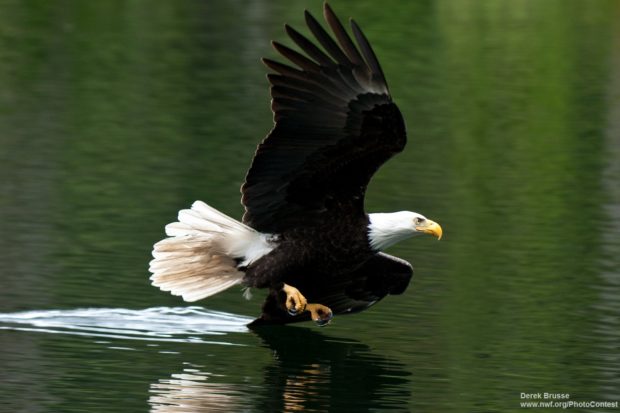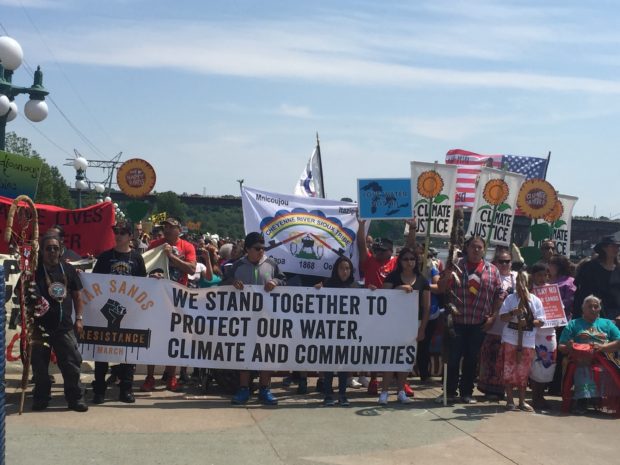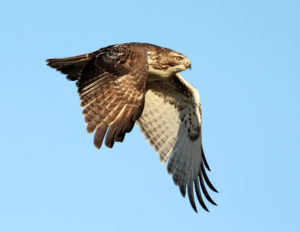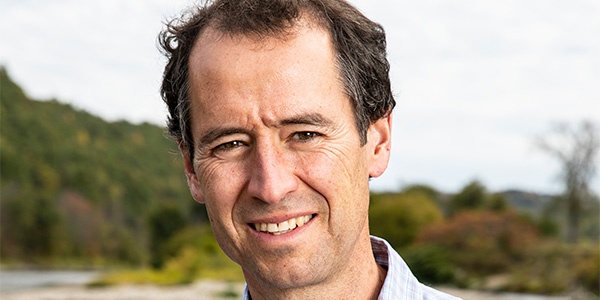We have much more to do and your continued support is needed now more than ever.
Thousands March in St. Paul to Protect Wildlife from Tar Sands
As we were just beginning to understand what a momentous day we had ahead of us, a bald eagle swooped over the gathering crowd at Lamberts Landing in St. Paul, Minnesota and then out over the Mississippi River in search of fish.
Such a sight would have been rare just years ago. It told us of the progress we can achieve when people come together to protect wildlife.

Turning the Tide for Wildlife
In what may be remembered as a day the tide again turned in favor of wildlife, I was proud and humbled to march with over 5,000 people to demand a better future for wildlife at the Tar Sands Resistance March in St. Paul. The message was simple: let’s build an energy future where wildlife and communities can thrive. Let’s turn away from a risky future of extreme fossil fuels like tar sands that place our water, wildlife, communities and climate in peril.
As we close in on rejection of the controversial and dangerous Keystone XL pipeline, it appears the U.S. State Department still hasn’t fully gotten the message. Last Spring, it approved a behind-the-scenes illegal scheme to approximately double the amount of tar sands entering the Great Lakes region. This is despite having promised to conduct a public permitting and review process before allowing any additional tar sands into the region.
Delivering a Message: Wildlife Can’t Afford Tar Sands Oil
On Saturday, 5000 people delivered a message. Tar sands oil is all risk and no reward for the Great Lakes region. The additional tar sands oil illegally approved by the State Department will almost certainly pass by the at-capacity refineries in the Great Lakes and head to the Gulf Coast, where it will be exported. The tar sands oil already entering the region is currently sickening nearby communities and rivers.


After marching over a mile to the State Capitol, speaker after speaker spoke of hope and of a better future for our children, where we don’t have energy sacrifice zones for energy, but instead gain our power from clean energy that doesn’t imperil people and wildlife. It voice grew louder than the next.
All the while, a red tailed hawk perched on the State Capitol dome encircled the crowed, drawing the crowd’s attention, reminding us of what we were there to protect.
 Tell the State Department: Do not allow expansion of the Alberta Clipper tar sands pipeline!
Tell the State Department: Do not allow expansion of the Alberta Clipper tar sands pipeline!






















